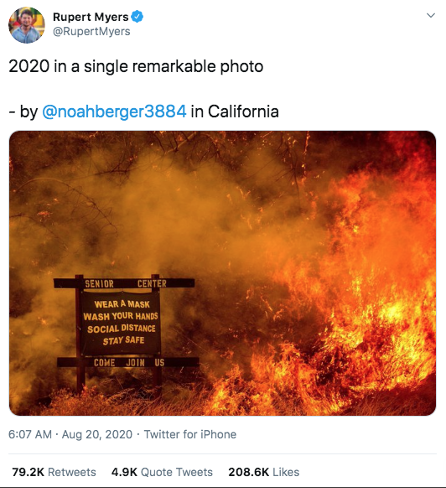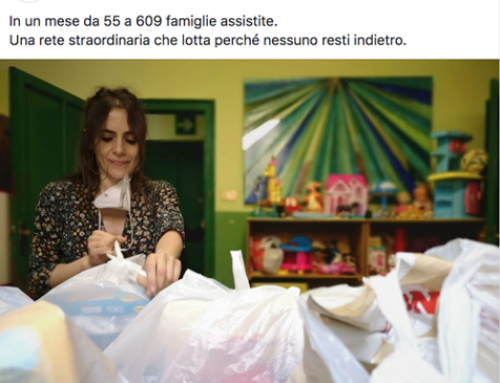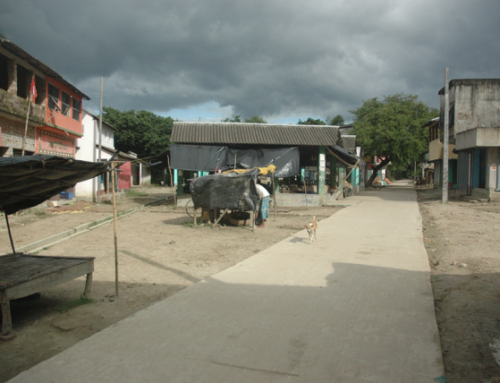Crisis, Crisis Everywhere
Perhaps more than any other idiom, “crisis” has come to shape collective understandings and responses to the Covid-19 pandemic. The term has become virtually ubiquitous in public discourse over the past months, gesturing both to rapidly proliferating forms of precarity and to the sense of uncertainty they engender. As time goes on, the pandemic is increasingly framed as not just one catastrophe, but also as a series of overlapping and interrelated crises. “The Covid-19 pandemic is a public health emergency – but it is far more,” UN Secretary General António Guterres wrote in an article on pandemic responses and recovery in late April: “It is an economic crisis. A social crisis. And a human crisis that is fast becoming a human rights crisis.” The International Monetary Fund calls Covid-19 “A Crisis Like No Other,” with reverberating effects not seen since the Great Depression. The UN’s Food and Agriculture Organization describes a looming “crisis within a crisis,” with the number of people facing acute food insecurity globally projected to double to 265 million by the end of the year. In the United States, headlines reflect a paralyzing abundance of crises, each compounded by the pandemic: racism and police brutality; mass incarceration; rights abuses in migrant detention centers; apocalyptic wildfires and hurricanes intensified by climate change; housing and food insecurity; a looming election crisis; the list goes on.

Flames from recent California wildfires surround a sign promoting social distancing and masking measures against Covid-19. (USA)
This collection considers what it means to live in times of multiple, interrelated “crises,” and what anthropologists can contribute to an understanding of their points of intersection.
I first began thinking about intersecting crises with the contributors to this collection when super cyclonic storm Amphan – one of the strongest recorded cyclones in the Bay of Bengal – struck the low-lying Sundarbans delta where Annu Jalais, Megnaa Mehtta, Amites Mukhopadhyay, and I conduct fieldwork. Even before the cyclone, our interlocutors faced immense difficulties due to the virus and the economic effects of India’s draconian lockdown. “And now, on top of Corona, a cyclone,” a friend said to me over a faint phone line the day before the storm hit. A few weeks later, he summarized local conditions in familiar language, telling me: “We are in the midst of crisis” [āmrā saṃkaṭer madhye āchi]. I was immediately struck by his use of the word “crisis.” Though the Sundarbans is routinely described as ground zero of the global “climate crisis,” I’d not heard the term used much during fieldwork. Trouble talk was common, but crisis narratives did not feature prominently in people’s interpretations of place. Following Covid-19, the lockdown, and cyclone, however, crisis had seeped into our conversations.

On March 11, 2020, cartoonist Graeme MacKay published the cartoon on the far left, which has since been extended to encompass additional threats. The reference to handwashing invokes a sense of futility in the face of mounting crises
he seeming ubiquity of crisis talk raises a number of questions. What is a crisis, and who has the power to define an event or condition as such? How and when do crises begin or end? How are crises experienced and responded to, and how are such responses shaped by identity and social position? This collection of essays considers these and other questions at the intersection of the Covid-19 pandemic and issues commonly framed as crises. The contributors bring insights from their research on conflict and insecurity, migration and displacement, human-environment relations and disasters, and financial markets into conversation with the pandemic to consider “crisis” in its discursive, affective, and material complexity. In doing so, they do not affirm or deny the status of an event or condition as a crisis in an ontological sense, but rather use the idea of multiple, intersecting crises to better understand dynamics of change and continuity, and power and marginality during these tumultuous times.
Approaching “Crisis”
In reflecting on “crisis” and the ways it is leveraged, it’s useful to consider the word’s origins. The English term “crisis” can be traced to the ancient Greek word krinō, meaning to separate, choose, or judge (Koselleck 2006, 358). In law, theology, and medicine, the Greek word implied a choice with important consequences, such as that between life and death. It held particular significance in political spheres, where it referred to government decisions – whether electoral decisions or those relating to war and peace. For the ancient Greeks, “crisis” was thus central to ideas about political order and justice (Koselleck 2006, 360).
The word also acquired religious connotations over time. Greek translations of the Old and New Testaments kept these juridical associations, but in the biblical understanding God was ruler and judge. This became especially salient when linked with apocalyptic visions of the future. In Christian eschatology, the crisis “at the end of the world will for the first time reveal true justice” (Koselleck 2006, 359). Though the term has been generalized and secularized over the centuries, it remains rooted in a Western Christian temporality of past, present, and future, with an implication of salvation that remains intact (Beck and Knecht 2016). This framework implies that crises have specific beginning and end points, and is in turn attached to linear progress narratives about the development of complex, capitalist societies as structured by periodic episodes of crisis and renewal (Beck and Knecht 2016).
With this in mind, it is not surprising that the crises that populate headlines are placed in rhetorical opposition to a more stable, “normal” social order of “before the crisis” on the one hand, and a parallel hope for renewal “after the crisis.” Common framings of the pandemic continue to carry something of the original sense of the Greek word, conjuring ideas of competent figures of authority, tasked with making morally consequential decisions to manage a bounded period of instability and bring about a resolution. For example, current hopes for deliverance are overwhelmingly invested in scientists’ ability to develop an effective vaccine.
As the pandemic clearly demonstrates, however, crises, their management, and whether and how they are resolved are all open questions. Although periods of crisis are often seen as openings that allow people to think and act otherwise, crisis narratives can also limit explanations and actions that can be taken in relation to an event or condition, foreclosing alternative approaches to change (Roitman 2014). Indeed, crisis talk can work to stabilize certain institutions, practices, and realities, in part by obscuring the historical conditions that allow crises to emerge in the first place (Masco 2017). To use the above example, if attention is focused primarily on a vaccine, what else is obscured or forgotten? The intersecting crises of the moment point to the need to consider this question in more depth, and to reconsider the “normal” in the process.
Intersecting Crises
The essays in this collection offer an ethnographically grounded approach to crises and their intersections. Rather than thinking of “crisis” as an external shock to an otherwise stable and functioning system, the essays develop processual understandings that recognize the diverse forces and agencies that produce what comes to be understood as crises over long spans of time. Essays by Annu Jalais and Amites Mukhopadhyay and Megnaa Mehtta blur distinctions between “social” and “natural” disasters, demonstrating how the troubles Sundarbans islanders face have emerged out of historical processes of colonial and post-colonial extraction, ongoing structural and symbolic violence, and non-human agencies that range in scale from an invisible, microscopic virus to the overwhelming force of a super cyclone.
At the same time, as Megnaa Mehtta argues, states of crisis are never objective. Experiences and interpretations of crises are shaped by one’s social emplacement and the intersection of multiple identities. On the one hand, such crises can compound existing forms of marginalization on the basis of age, race and ethnicity, class, caste, religion, gender, and sexuality. But as Karen Ho’s essay shows, both winners and losers emerge in crisis contexts. As she explains, even as unprecedented numbers of people face financial ruin and racialized inequality grows, Wall Street investors are benefitting handsomely from a record high stock market and government bailouts.
This brings up a third point, which concerns individual and collective responses to crises. Taken together, the issues these essays address demonstrate how the intersection of crises can suddenly and sharply reveal the extent to which “normal” life is so often predicated on structural and symbolic violence. When crises intersect, however, the idea of a crisis can also carry moral force and generate energy for change. This is evident in the forms of support and care explored in the essay on urban Afghanistan by Annika Schmeding and Omar Sharifi. As this case shows, historical experiences of crisis and the exclusions they generate have led to the establishment of networks that can be mobilized in the face of newly emergent difficulties.
In everyday usage, the word “crisis” continues to imply that whatever the issue – be it a pandemic, war, or climate change – it can and should be managed by those in authority. The intersecting crises of the moment shatter this illusion, instead highlighting the need to understand the historical processes and agencies that have constituted the crises of the day while accounting for the positions and practices of those who negotiate them. With careful attention, we can perhaps begin to imagine a post-Covid scenario defined not by crisis, but by forms of mutual struggle and reciprocal care pursued together with those, to quote the poet Adrienne Rich, who:
“age after age, perversely,
with no extraordinary power,
reconstitute the world.”
References:
Beck, Stefan, and Michi Knecht. 2016. “‘Crisis’ in Social Anthropology: Rethinking a Missing Concept.” In The Handbook of International Crisis Communication Research, edited by Andreas Schwarz, Matthew W. Seeger, and Claudia Auer, 56–65. Soutrhern Gate, Chichester, West Sussex, UK ; Malden, MA: Wiley Blackwell.
Ho, Karen. 2020. “Why the Stock Market is Rising Amidst a Pandemic and Record, Racialized Inequality.” In “Intersecting Crises,” Calynn Dowler, editor, American Ethnologist website, 12 October 2020, [https://americanethnologist.org/features/pandemic-diaries/introduction-intersecting-crises/why-the-stock-market-is-rising-amidst-a-pandemic-and-record-racialized-inequality]
Jalais, Annu, and Mukhopadhyay, Amites. 2020. “Of Pandemics and Storms in the Sundarbans.” In “Intersecting Crises,” Calynn Dowler, editor, American Ethnologist website, 12 October 2020, [https://americanethnologist.org/features/pandemic-diaries/introduction-intersecting-crises/of-pandemics-and-storms-in-the-sundarbans]
Koselleck, Reinhart. 2006. “Crisis.” Translated by Michaela W. Richter. Journal of the History of Ideas 67 (2): 357–400.
Mehtta, Megnaa. 2020. “A New Crisis and an Old Conversation: Reflections on Quotidian Care in the Sundarbans” In “Intersecting Crises.” In “Intersecting Crises,” Calynn Dowler, editor, American Ethnologist website, 12 October 2020, [https://americanethnologist.org/features/pandemic-diaries/introduction-intersecting-crises/a-new-crisis-and-an-old-conversation-reflections-on-quotidian-care-in-the-sundarbans]
Masco, Joseph. 2017. “The Crisis in Crisis.” Current Anthropology 58 (S15): S65–76. https://doi.org/10.1086/688695.
Roitman, Janet L. 2014. Anti-Crisis. Durham: Duke University Press.
Schmeding, Annika, and Omar Sharifi. 2020. “Adapting Solidarity, Navigating Uncertainty: Conflict and Covid-19 in Urban Afghanistan.” In “Intersecting Crises,” Calynn Dowler, editor, American Ethnologist website, 12 October 2020, [https://americanethnologist.org/features/pandemic-diaries/introduction-intersecting-crises/adapting-solidarity-navigating-uncertainty-conflict-and-covid-19-in-urban-afghanistan].
Cite as: Dowler, Calynn. 2020. “Introduction.” In “Intersecting Crises,” Calynn Dowler, editor, American Ethnologist website, 3 October 2020, [https://americanethnologist.org/panel/pages/features/pandemic-diaries/introduction-intersecting-crises/introduction-intersecting-crises/edit].
Calynn Dowler is a PhD candidate in anthropology at Boston University. Her dissertation explores shifting material and moral entanglements with water in the Sundarbans delta of West Bengal, India.




